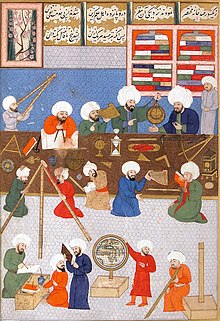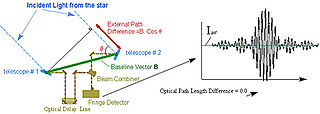
Astrometry is a branch of astronomy that involves precise measurements of the positions and movements of stars and other celestial bodies. It provides the kinematics and physical origin of the Solar System and this galaxy, the Milky Way.
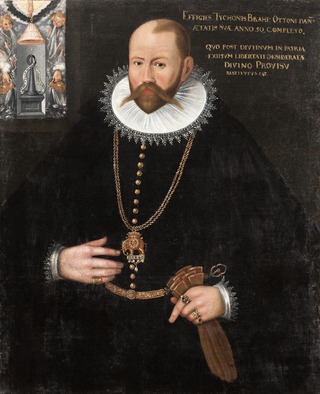
Tycho Brahe, generally called Tycho for short, was a Danish astronomer, known for his comprehensive and unprecedentedly accurate astronomical observations. He was known during his lifetime as an astronomer, astrologer, and alchemist. He was the last major astronomer before the invention of the telescope.

Mīrzā Muhammad Tāraghay bin Shāhrukh, better known as Ulugh Beg, was a Timurid sultan, as well as an astronomer and mathematician.
Timeline of astronomical maps, catalogs and surveys
Timeline of telescopes, observatories, and observing technology.
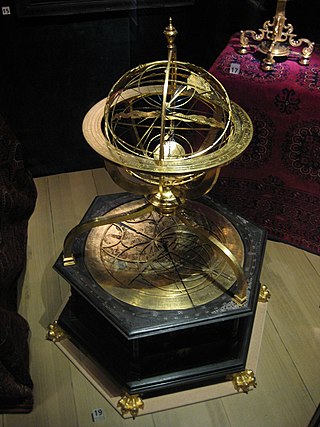
An armillary sphere is a model of objects in the sky, consisting of a spherical framework of rings, centered on Earth or the Sun, that represent lines of celestial longitude and latitude and other astronomically important features, such as the ecliptic. As such, it differs from a celestial globe, which is a smooth sphere whose principal purpose is to map the constellations. It was invented separately, in ancient China possibly as early as the 4th century BC and ancient Greece during the 3rd century BC, with later uses in the Islamic world and Medieval Europe.

Uraniborg was a Danish astronomical observatory and alchemy laboratory established and operated by Tycho Brahe. It was the first custom-built observatory in modern Europe, and the last to be built without a telescope as its primary instrument.

A globe is a spherical model of Earth, of some other celestial body, or of the celestial sphere. Globes serve purposes similar to maps, but unlike maps, they do not distort the surface that they portray except to scale it down. A model globe of Earth is called a terrestrial globe. A model globe of the celestial sphere is called a celestial globe.

Taqi ad-Din Muhammad ibn Ma'ruf ash-Shami al-Asadi was an Ottoman polymath active in Cairo and Istanbul. He was the author of more than ninety books on a wide variety of subjects, including astronomy, clocks, engineering, mathematics, mechanics, optics and natural philosophy.

Astronomy in China has a long history stretching from the Shang dynasty, being refined over a period of more than 3,000 years. The ancient Chinese people have identified stars from 1300 BCE, as Chinese star names later categorized in the twenty-eight mansions have been found on oracle bones unearthed at Anyang, dating back to the mid-Shang dynasty. The core of the "mansion" system also took shape around this period, by the time of King Wu Ding.
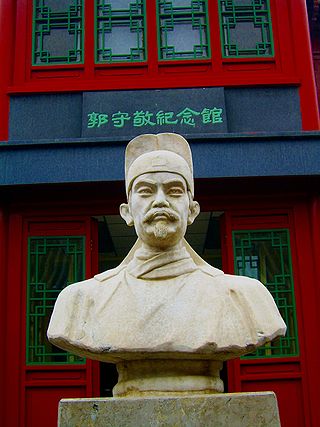
Guo Shoujing, courtesy name Ruosi (若思), was a Chinese astronomer, hydraulic engineer, mathematician, and politician of the Yuan dynasty. The later Johann Adam Schall von Bell (1591–1666) was so impressed with the preserved astronomical instruments of Guo that he called him "the Tycho Brahe of China." Jamal ad-Din cooperated with him.
The year 1577 in science and technology included many events, some of which are listed here.

Medieval Islamic astronomy comprises the astronomical developments made in the Islamic world, particularly during the Islamic Golden Age, and mostly written in the Arabic language. These developments mostly took place in the Middle East, Central Asia, Al-Andalus, and North Africa, and later in the Far East and India. It closely parallels the genesis of other Islamic sciences in its assimilation of foreign material and the amalgamation of the disparate elements of that material to create a science with Islamic characteristics. These included Greek, Sassanid, and Indian works in particular, which were translated and built upon.
During its 600-year existence, the Ottoman Empire made significant advances in science and technology, in a wide range of fields including mathematics, astronomy and medicine.

The Great Comet of 1577 is a non-periodic comet that passed close to Earth during the year 1577 AD. Being classed as non-periodic, indicated by its official designation beginning with "C", means that it is not expected to return. In 1577, the comet was visible to all of Europe, and was recorded by many contemporaries of the time, including the famous Danish astronomer Tycho Brahe and Turkish astronomer Taqi ad-Din. From his observations of the comet, Brahe was able to discover that comets and similar objects travel above the Earth's atmosphere. The best fit using JPL Horizons suggests that the comet is currently about 324 AU (48.5 billion km) from the Sun.
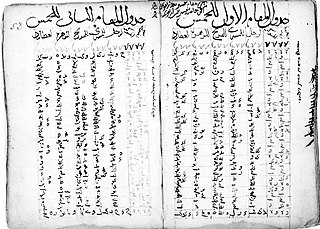
A zij is an Islamic astronomical book that tabulates parameters used for astronomical calculations of the positions of the sun, moon, stars, and planets.

A mural instrument is an angle measuring instrument mounted on or built into a wall. For astronomical purposes, these walls were oriented so they lie precisely on the meridian. A mural instrument that measured angles from 0 to 90 degrees was called a mural quadrant. They were utilized as astronomical devices in ancient Egypt and ancient Greece. Edmond Halley, due to the lack of an assistant and only one vertical wire in his transit, confined himself to the use of a mural quadrant built by George Graham after its erection in 1725 at the Royal Observatory, Greenwich. Bradley's first observation with that quadrant was made on 15 June 1742.

In astronomy, a transit instrument is a small telescope with extremely precisely graduated mount used for the precise observation of star positions. They were previously widely used in astronomical observatories and naval observatories to measure star positions in order to compile nautical almanacs for use by mariners for celestial navigation, and observe star transits to set extremely accurate clocks which were used to set marine chronometers carried on ships to determine longitude, and as primary time standards before atomic clocks. The instruments can be divided into three groups: meridian, zenith, and universal instruments.

Sevim Tekeli was a prominent Turkish history of science professor.
David Ungnad von Sonnegg was the Holy Roman Ambassador to the Ottoman Empire from 1572 to 1578. He was sent by Maximilian II, Holy Roman Emperor and accredited by Sultan Selim II.
